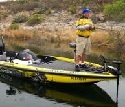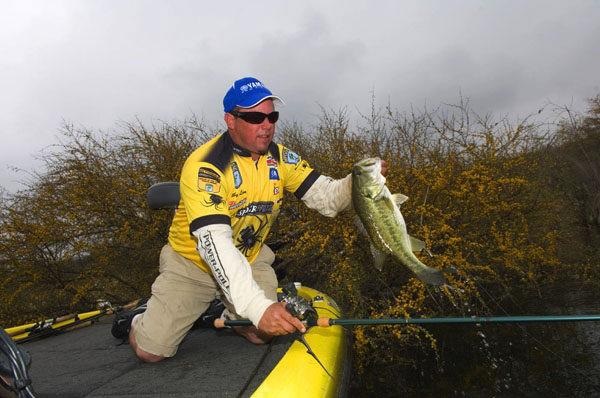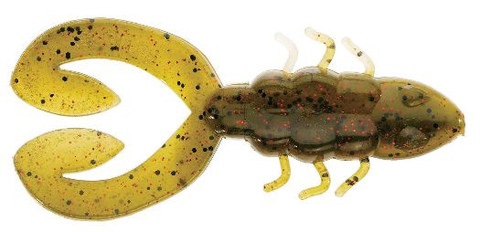 Although Yamaha pro Bobby Lane never leaves the boat ramp without a supply of flipping jigs in his tackle boxes, he also saves room for plenty of plastic buzz frogs, especially during the spring and summer months. “It’s an excellent big bass bait, especially if you’re fishing vegetation,” notes Lane, who caught an 11-pounder and several others in the seven-pound range with the lure during a recent trip on Florida’s Lake Kissimmee. “I’ve fished them for 15 years from Florida to Texas to New York and done well with them on all types of lakes.”
Although Yamaha pro Bobby Lane never leaves the boat ramp without a supply of flipping jigs in his tackle boxes, he also saves room for plenty of plastic buzz frogs, especially during the spring and summer months. “It’s an excellent big bass bait, especially if you’re fishing vegetation,” notes Lane, who caught an 11-pounder and several others in the seven-pound range with the lure during a recent trip on Florida’s Lake Kissimmee. “I’ve fished them for 15 years from Florida to Texas to New York and done well with them on all types of lakes.”

Buzz frogs are imitation frogs and feature solid bodies with a pair of extending rear legs. They’re designed for surface fishing, but differ from hollow-body frogs in that they sink if the retrieve is stopped; thus, most pros like Lane fish them fast, usually ‘buzzing’ them over and through lily pads, hydrilla, and other surface greenery. Because they’re weedless, the frogs can be fished in heavy cover without snagging, and since several soft plastics companies produce them, they’re easy to find in tackle shops.
“It’s strictly a reaction strike,” the Yamaha pro continues. “A frog creates a lot of noise and commotion with its swimming legs, but because you’re fishing it fast and in cover bass don’t see it very well. Instinct tells them strike, and believe me, they do.
The Yamaha pro emphasizes that rigging a buzz frog is critical for maximizing its action in the water. The hook must be aligned perfectly straight in the center of the body or the lure will roll during the retrieve. Lane prefers a large 5/0 hook, and often puts a 1/16-oz screw-in weight in the head of the frog so he can gain extra casting distance.

“Buzz frogs also work well as search baits because you can cover so much water with them on longer casts,” Lane points out. “I really think they work best when you fish them through and along the edges of shallow vegetation, but I’ve also caught bass working them around flooded bushes, stumps, laydowns, and even riprap.
“I fish them with 50-lb. braided line with a heavy action rod and a fast 7:1 reel, because I want to keep the frog moving fast without stopping and then have enough power to bring a bass out of heavy cover. Because the braid doesn’t stretch, I can get a good hook-set even when I do make a long cast.”
The Yamaha pro credits much of his 2008 success in the Bassmaster® Elite Series, during which he won Rookie of the Year honors, to buzz frogs, including his 7th place finish on Lake Kissimmee and 13th at Old Hickory Lake in Tennessee.
“They’re fun lures to use because bass really explode on them,” concludes Lane, “even when you can’t catch them on a jig.”

